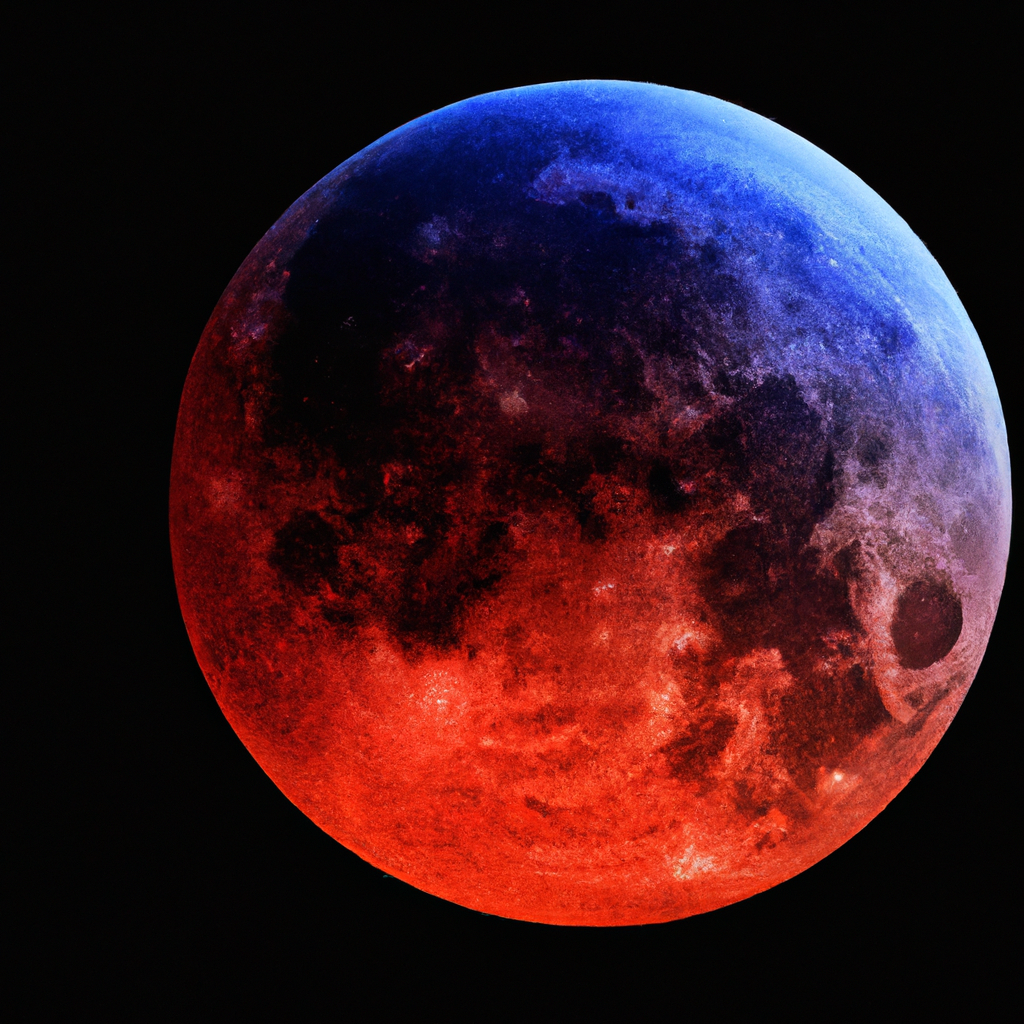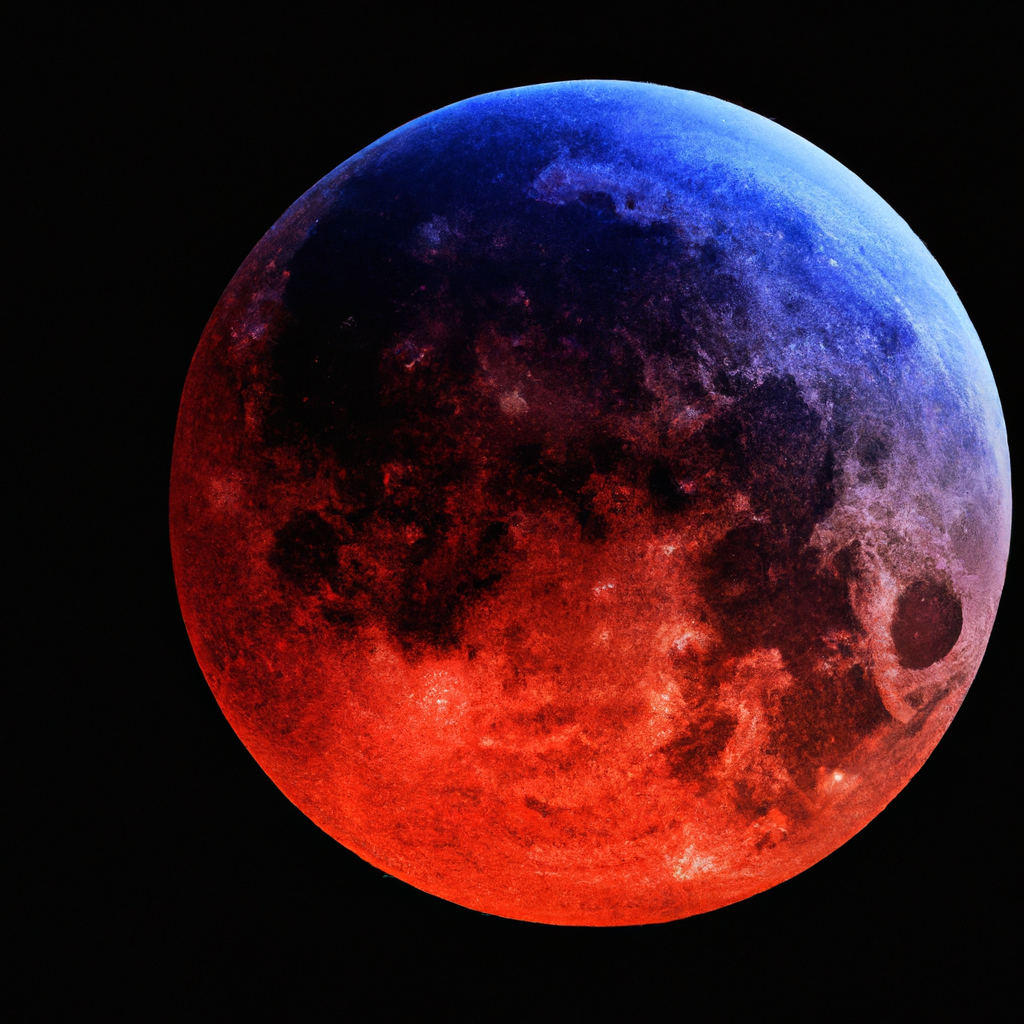Have you ever gazed up at the night sky, mesmerized by the ethereal beauty of an eclipse? In the captivating world of celestial events, eclipses hold a unique power, for they not only awe us with their breathtaking spectacle but also leave a profound impact on our planet and its inhabitants. From the ancient civilizations who held them in reverence to the modern scientific advancements that unlock their secrets, the study of eclipses continues to inspire wonder and ignite curiosity. Join us as we embark on a journey to uncover the mysteries and explore the mesmerizing influence of these remarkable cosmic phenomena.

This image is property of images.unsplash.com.
Types of Eclipses
Eclipses are one of the most captivating celestial events that occur, and they come in two main forms: solar eclipses and lunar eclipses. Each type of eclipse has its own unique characteristics and mesmerizing effects that can be observed from Earth.
Solar Eclipses
Solar eclipses occur when the moon passes between the sun and the Earth, casting a shadow on our planet. This phenomenon happens during the new moon phase when the moon is perfectly aligned with the sun and Earth. There are three stages that define the progression of a solar eclipse: partial, annular, and total.
Definition
A solar eclipse refers to the blocking of the sun’s light by the moon as it moves across its orbit. In this captivating event, the moon casts its shadow on a specific area on Earth, resulting in a temporary darkness that can be witnessed by those within the eclipse’s path.
Phases of a Solar Eclipse
Solar eclipses have distinct stages that add an element of awe to this celestial occurrence. The first phase is the partial solar eclipse, where the moon partially covers the sun, creating a mesmerizing crescent shape. Next is the annular eclipse, where the moon is at a farther distance from Earth, making it appear smaller and leaving a bright ring of sunlight visible around its edges. The most captivating phase is the total solar eclipse, where the moon aligns perfectly with the sun, and the entire disk of the sun is covered, revealing a stunning corona.
Types of Solar Eclipses
Different types of solar eclipses occur depending on the alignment of the moon, Earth, and the sun. The most awe-inspiring type is the total solar eclipse, where the moon completely blocks the sun, plunging the surrounding area into temporary darkness. Partial solar eclipses occur when only a portion of the sun is covered by the moon, creating a remarkable crescent shape. Another type, known as an annular solar eclipse, happens when the moon is at its farthest point from Earth, resulting in a visible ring of sunlight around the moon.
Path of Totality
During a total solar eclipse, there is a specific path on Earth called the Path of Totality, where observers can witness the complete blocking of the sun by the moon. This path can vary in width, and it is only within this narrow corridor that the breathtaking sight of a total solar eclipse can be experienced in all its glory. Outside the Path of Totality, observers can still witness a partial solar eclipse, but the full spectacle can only be seen within this narrow range.
Lunar Eclipses
lunar eclipses occur when the Earth casts a shadow on the moon, resulting in a dimming or darkening of the moon’s surface. Unlike solar eclipses, lunar eclipses are visible to anyone on the nighttime side of Earth and happen during the full moon phase.
Definition
A lunar eclipse refers to the event where the Earth passes between the sun and the moon, casting a shadow on the lunar surface. As the Earth’s shadow falls upon the moon, it gradually dims or darkens the moon’s appearance, offering a fascinating sight for sky gazers.
Phases of a Lunar Eclipse
Similar to solar eclipses, lunar eclipses also have various stages. The first phase of a lunar eclipse is known as the penumbral eclipse. During this phase, the moon moves into the Earth’s penumbral shadow, resulting in a subtle darkening of the moon’s surface. The next stage is the partial lunar eclipse, where a portion of the moon is directly within the Earth’s umbra shadow, causing a more noticeable darkening effect. Finally, during a total lunar eclipse, the moon is entirely within the Earth’s umbra shadow, resulting in a stunning reddish hue known as the blood moon.
Types of Lunar Eclipses
Lunar eclipses can be categorized into three types: penumbral lunar eclipse, partial lunar eclipse, and total lunar eclipse. A penumbral lunar eclipse occurs when the moon only passes through the Earth’s penumbra, resulting in a subtle darkening that is often difficult to detect. A partial lunar eclipse happens when a portion of the moon enters the Earth’s umbra shadow, creating a distinct visible darkening effect. The most captivating lunar eclipse is the total lunar eclipse, where the entire moon is enveloped by the Earth’s umbra shadow, giving it a breathtaking reddish appearance.
Impacts of Eclipses on Earth
Eclipses have a wide range of impacts on Earth, affecting various aspects of our planet’s ecosystems, climate, and even human perception.
Tidal Effects
One significant impact of eclipses is their effect on Earth’s tides. During both solar and lunar eclipses, the alignment of the sun, moon, and Earth creates gravitational forces that can influence ocean tides. Tides are typically higher during eclipses, with a noticeable increase in the tidal range. This phenomenon is particularly evident during total solar eclipses, where observers can witness the rapid changes in tide levels.
Temperature Changes
Eclipses can also have an impact on local temperatures. During a solar eclipse, the sudden decrease in sunlight can cause a drop in temperature in the area covered by the eclipse’s shadow. This temperature change is often felt more significantly during a total solar eclipse when the sun is completely blocked by the moon. Similarly, a lunar eclipse can lead to a slight decrease in temperature as the moon’s surface is dimmed by the Earth’s shadow.
Animal and Plant Behavior
Eclipses have been known to affect the behavior of animals and plants. Some studies suggest that animals may exhibit different behaviors during eclipses, such as birds returning to their nests or fish becoming more active. Additionally, certain plants may undergo changes in their growth patterns or close their flowers during an eclipse. The exact mechanisms behind these behavioral changes are still being studied, but they provide fascinating insights into how celestial events can impact the natural world.
Human Perception
On a more personal level, eclipses have a profound impact on human perception. Witnessing the awe-inspiring sight of an eclipse can evoke a sense of wonder and reflection. Many people report feeling a spiritual connection to the universe during these celestial events. For some, witnessing an eclipse can be a transformative experience, providing a greater appreciation for the vastness and beauty of our cosmos.

This image is property of images.unsplash.com.
Historical Significance of Eclipses
eclipses have played a significant role not only in scientific discoveries but also in cultural and spiritual beliefs throughout history.
Cultural and Spiritual Beliefs
Eclipses have long been seen as significant celestial events in various cultures and religions around the world. Ancient civilizations often attributed eclipses to the actions of gods or mythical creatures, interpreting them as omens or messages from higher powers. Some cultures believed that eclipses marked the intervention of supernatural beings or signaled the beginning or end of an era. Even today, certain cultural traditions and rituals are associated with eclipses, highlighting the enduring impact of these events on human belief systems.
Superstitions and Folklore
Eclipses have also given rise to numerous superstitions and folklore. Throughout history, people have held a variety of beliefs and practices surrounding eclipses, including the need to take precautions to protect oneself from the perceived negative effects. Some cultures believed that harmful spirits or celestial creatures were responsible for eclipses and employed various rituals to ward off their influence. These superstitions and folklore provide a fascinating glimpse into the human psyche and the ways in which we have sought to make sense of the celestial mysteries.
Scientific Importance of Eclipses
Beyond their cultural and historical significance, eclipses have played a crucial role in scientific discoveries and advancements in various fields of study.
Astronomical Discoveries
Eclipses have allowed astronomers to make remarkable discoveries throughout history. One of the most critical breakthroughs was the verification of Albert Einstein’s theory of general relativity during a total solar eclipse in 1919. The bending of starlight around the sun, as observed during the eclipse, provided evidence for Einstein’s theory and revolutionized our understanding of the universe. Eclipses continue to provide opportunities for astronomers to observe and study astronomical phenomena that are otherwise difficult to observe.
Advancements in Solar Physics
Solar eclipses have been instrumental in advancing our knowledge of the sun and its properties. During a total solar eclipse, scientists can study the sun’s outer atmosphere, known as the corona, which is usually hidden by the sun’s bright surface. By examining the corona’s composition and behavior, researchers can gain insights into the sun’s magnetic field, solar wind, and other aspects of solar physics. The unique opportunities provided by solar eclipses have paved the way for significant breakthroughs in our understanding of our nearest star.
Studying Earth’s Atmosphere
Lunar eclipses provide scientists with valuable opportunities to study and analyze Earth’s atmosphere. By observing the reddish hue of a total lunar eclipse, researchers can gather data on the unique scattering properties of our atmosphere. This information contributes to our understanding of atmospheric particles, such as aerosols and pollutants, and can inform climate and environmental studies. Lunar eclipses offer a rare chance to investigate our own planet from a fresh perspective.

This image is property of images.unsplash.com.
Eclipse Viewing and Safety
While eclipses offer incredible visual spectacles, it is crucial to prioritize safety when observing these celestial events.
Safe Viewing Practices
When observing a solar eclipse, it is essential to use safe viewing practices to protect your eyes from the sun’s harmful rays. Staring directly at the sun, even during an eclipse, can cause severe eye damage or even blindness. Instead, opt for indirect viewing methods, such as using eclipse glasses or specially designed solar filters for telescopes or cameras. These devices are designed to filter out the harmful ultraviolet and infrared rays, allowing you to observe the eclipse safely.
Protection for Eyes
Eclipse glasses are a popular choice for safely viewing solar eclipses. These glasses have special lenses that block out the majority of the sun’s harmful rays, allowing you to look directly at the sun without causing harm to your eyes. It is essential to use certified and reputable eclipse glasses to ensure they meet the necessary safety standards. Regular sunglasses are not sufficient for solar eclipse viewing and can cause irreparable damage to your eyes.
Equipment for Observation
For those interested in capturing the intricate details of an eclipse, using proper equipment is crucial. Solar filters specifically designed for telescopes or cameras are necessary to protect the equipment from the intense brightness of the sun. These filters act as a shield, allowing you to capture the eclipse’s beauty while safeguarding your equipment. Always consult reputable sources or seek advice from experienced astronomers before using any equipment for eclipse observation.
Famous Eclipses Throughout History
Several eclipses have achieved fame and captured the imagination of observers worldwide due to their unique circumstances or historical significance.
Total Solar Eclipse of 1919
The total solar eclipse of 1919 is considered one of the most pivotal eclipses in scientific history. This eclipse provided the opportunity for astronomers to verify Albert Einstein’s theory of general relativity by observing the bending of starlight around the sun during totality. The results of this observation confirmed Einstein’s theory, leading to a paradigm shift in our understanding of the universe and cementing the eclipse’s place in scientific lore.
Hale-Bopp Comet Eclipse of 1997
In 1997, an extraordinary event occurred when the Hale-Bopp Comet passed close to Earth during a total solar eclipse. This rare celestial alignment allowed observers to witness the stunning sight of a comet streaking across the darkened sky during totality. The combination of two cosmic phenomena in a single event captivated the world and resulted in breathtaking images that remain etched in astronomical history.
Annular Solar Eclipse of 1994
The annular solar eclipse of 1994 stands out due to its unique characteristics. During this eclipse, the moon was at its farthest point from Earth, causing it to appear slightly smaller than the sun. As a result, the sun’s outer edge remained visible, forming a brilliant ring of light known as an annulus around the darkened center. This distinctive ring of sunlight created a striking visual spectacle that captured the fascination of observers worldwide.

Eclipse Chasing and Tourism
Eclipse chasing has become a popular pursuit among enthusiastic sky gazers who travel to different parts of the world to witness these extraordinary events.
Popular Eclipse Destinations
Certain locations around the world have gained popularity as prime eclipse viewing destinations due to their ideal weather conditions, natural landscapes, and accessibility. Locations such as Chile, Argentina, and Bolivia in South America, or remote islands like Easter Island or Tahiti in the Pacific, attract eclipse chasers with their breathtaking vistas and the promise of witnessing eclipses against stunning backdrops.
Planning an Eclipse Trip
Planning an eclipse trip requires careful preparation and consideration. Eclipse chasers often consult eclipse prediction charts and maps to determine the best locations and times to observe upcoming eclipses. Factors such as weather patterns, accessibility, and local infrastructure play a crucial role in choosing the perfect spot to witness an eclipse. Additionally, arranging travel logistics, accommodation, and ensuring proper equipment for observation are all part of the planning process for an unforgettable eclipse experience.
Future of Eclipse Study and Observation
As technology and scientific knowledge continue to advance, the future holds exciting prospects for eclipse study and observation.
Upcoming Eclipses
Eclipse enthusiasts can look forward to a series of upcoming eclipses that will provide new opportunities for observation and discovery. Eclipse prediction models allow astronomers and enthusiasts to make plans well in advance, ensuring they can witness these extraordinary events as they unfold. By tracking the positions of the sun, moon, and Earth, astronomers can calculate and predict future eclipses, allowing for ample time to plan and prepare for their observation.
Technological Advancements in Observation
Advancements in technology have significantly enhanced our ability to study and observe eclipses. From sophisticated telescopes and cameras to remote sensing satellites, scientists have an array of tools at their disposal for capturing and analyzing eclipse events. Continued advancements in instrumentation, imaging techniques, and data analysis will undoubtedly contribute to a deeper understanding of the complex phenomena associated with eclipses. This ongoing innovation will enable scientists and enthusiasts to uncover new insights into our universe and further expand our knowledge of these captivating celestial events.
In conclusion, eclipses continue to captivate and inspire observers worldwide with their stunning beauty and profound impact. From the remarkable progression of solar eclipses to the enchanting red glow of a lunar eclipse, these celestial phenomena never fail to leave us in awe. By understanding the various types of eclipses, their impacts on Earth, and their cultural, scientific, and historical significance, we gain a deeper appreciation for the wonders of our universe. As we continue to explore and study eclipses, we embrace the unique opportunities they provide to unravel the mysteries of our cosmos and expand the boundaries of human knowledge. So, remember to prepare safely, find the perfect viewing spot, and immerse yourself in the awe-inspiring world of eclipses.




